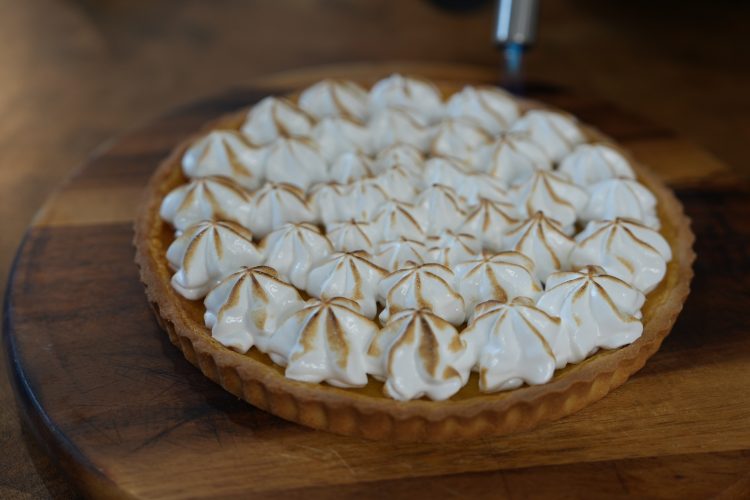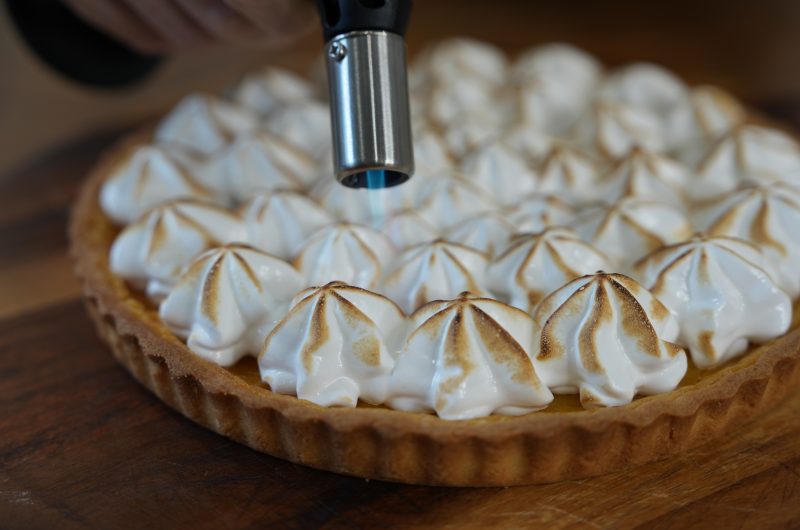Italian Meringue
Course: DessertCuisine: ItalianDifficulty: MediumServings
4-6
servingsPrep time
5
minutesCooking time
15
minutesIngredients
200 g sugar
125 ml water
4 large egg whites
1/2 teaspoon cream of tartar / lemon juice from 1 lemon
Directions
- Italian meringue is made with a sugar syrup. The egg whites are first whisked to soft peaks and then a hot sugar syrup (116-120 C – soft ball stage) is gradually added while whisking.
- Once all the sugar syrup has been added the mixture is then whisked until it cools to room temperature, becomes glossy and stiff peaks form when the whisk is lifted. It must be made with an electric mixer and it has a close texture with a thick, silky, smooth consistency.
- The hot syrup partially cooks the whites so that the resulting meringue mixture is more stable than Swiss and French meringue. For this reason, it is often used in recipes that requires meringue toppings that aren’t baked, or are only partially baked (or torched) to colour it, such as with a Lemon Meringue Pie or Baked Alaska.
- Like Swiss meringue, Italian meringue is ideal for piping as it holds its shape well. It also holds its volume well when combined with other mixtures or ingredients.
- Avoid Fats & Water : Fat and water prevents egg whites from foaming properly, so ensure all tools are grease-free and water-free.
- Use Room Temperature Eggs: Ideal whipping temperature is 21 C, warm eggs dissolve sugar more easily.
- Do Not Overbeat: Over-whipped egg whites collapse; keep the mixer at medium-high speed for control.
- Sugar Provides Stability: Use a 2:1 sugar-to-egg white ratio to enhance foam stability.
- Add an Acid: Lemon juice, cream of tartar, or vinegar improves flexibility and reduces collapse risk.
- Use Fresh Eggs: Older eggs whip faster but create a less stable foam; fresh eggs offer better structure.

